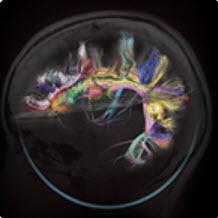
The National Institutes of Health is hosting the Multimodal TMS Speaker Series to bring together the leaders in the field conducting research using non-invasive brain stimulation and functional imaging including EEG and fMRI. The event will be broadcast via web-ex and archived for later viewing.
Andrea Antal will be speaking on October 10th, 11:00 am.
Talk Abstract:
Transcranial electrical stimulation combined with fMRI: past, present, future
Transcranial direct current stimulation (tDCS) is a non-invasive tool for inducing local and widespread neuroplastic changes in brain networks. Just only two decades ago the simultaneous application of tDCS and neuroimaging methods were considered to be unfeasible. The investigation of BOLD changes induced by tDCS during stimulation has been made possible by technical developments, which include evading electrode-related artifacts during image acquisition as well as tackling the risk caused by the potential heating of the wires. The combination of tDCS with various fMRI/MRI techniques provides whole brain data on the working mechanisms of tDCS, in particular on the development of large-scale activation patterns of interconnected neuronal regions induced by tDCS. By reviewing the recent scientific findings, we could detect that tDCS can induce a widespread alteration in brain activity far beyond the stimulation site, accompanied by changes in CBF, in some neurotransmitters and metabolic activity. However, several technical parameters (stimulation duration, the applied current density) and behavioral paradigms varied remarkably in these studies.
During the last years progress has been made in our understanding of the local and large-scale effects induced by tDCS, and this progression is expected to further continue by developing novel approaches measuring for e.g. EEG, behavioral data during the concurrent multichannel tDCS-fMRI application. Further challenge for recent and future research is the development of the simultaneous transcranial alternating current stimulation (tACS) – fMRI approach, because this method differs in the mechanism(s) of action, compared to tDCS.
Bio:
Andrea Antal, PhD, is an extraordinary professor at the Department of Clinical Neurophysiology, University Medical Center Göttingen, Germany. She is a biologist, the primary aim of her research group is to develop and establish new non-invasive brain stimulation methods and protocols to induce physiological changes in the central nervous system in order to investigate cognition and complex information processing. Dynamic modifications of neuronal networks are an important substrate for learning and memory formation. Furthermore, pathological neuroplasticity might be one foundation of numerous central nervous system diseases. Transcranial direct current stimulation (tDCS) as a tool aims to induce prolonged neuronal excitability and activity changes in the human brain via alterations of the neuronal membrane potential. Accordingly, this method is a promising tool in the treatment of diseases that are accompanied by changes of the inhibitory-excitatory balance in the brain. Transcranial alternating current stimulation (tACS) and random noise stimulation (tRNS), developed by her group in Göttingen, are new external stimulation techniques influencing cortical activity; they permit, due to the oscillating stimulation, external interference with the cortical oscillations. They can particularly modulate the temporary connections of cortical areas during a given task. Neuronal oscillations in the brain are associated with the processing of sensory information, learning, cognition, arousal, attention and also pathological conditions (e.g. Parkinson's tremor, epilepsy), Therefore, the external modulation of cortical oscillations could be an important component of induced cerebral plasticity.
Additional Event Information:
